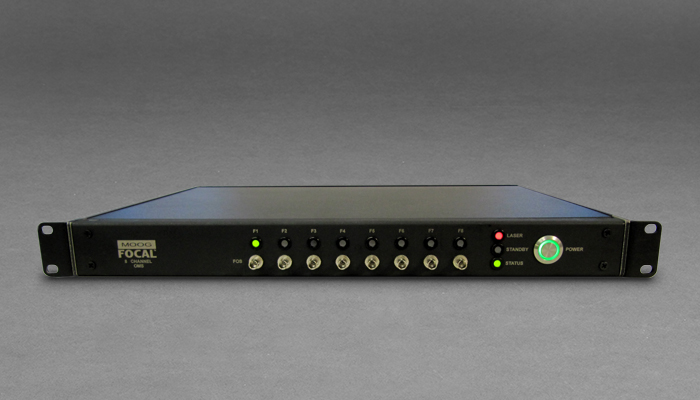928 Optical Monitoring System
Unlike standard telecom OTDRs, the OMS is designed specifically for use with ROVs, subsea controls, and other critical telemetry systems, avoiding the need for special operator training or requiring a system shutdown during measurements. Through continuous monitoring of multiple fibers, the OMS presents a dynamic picture of the entire optical system as a graphical chain of components, such as winches, tethers, and umbilicals. The GUI displays key details for each component, including fiber lengths, optical losses, and fault locations. User-configurable warnings and alarms quickly identify when and where specific system components deviate from operational norms. This allows users to detect anomalies, e.g. high losses or back reflections, and correct emerging optical problems well before they impact data links.
The OMS GUI includes key tools for plotting component-level performance, data logging, and statistical analysis to enable benchmarking of system performance during integration, commissioning, and operation. Subsequent data analytics can be used to identify trends and reduce operating costs through predictive and preventative maintenance. In addition to simply reducing costly downtime, correction of optical problems can also improve system performance and resilience to faults.
With logging and display of additional readings from Focal multiplexers and slip ring sensors, the OMS acts as a central hub for condition monitoring of the entire communication system, seamlessly integrating diagnostics and simplifying further analysis or data processing by external control systems.
Features
- Simple set up and operation
- Real-time performance monitoring on live fibers
- Automatic and continuous monitoring of multiple fibers
- Software for configuring, monitoring, trending & logging
- Factory or user configured operating modes
Benefits
- Save time identifying and locating optical problems
- Save operating costs by avoiding unscheduled downtime
- Increase power margins of critical telemetry links
- Reduce training and technical support costs
Typical Applications
- Remotely Operated Vehicles (ROVs)
- Floating Production Systems (FPS) equipment
- Subsea production and drilling controls
- Testing systems and cable handling gear
- Live monitoring of critical optical data links
Resources
Literature
Data Sheets
User Manuals
Technical Support
Telephone: +1-902-468-2263


